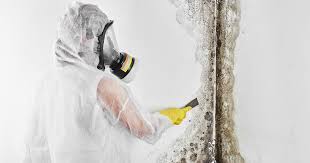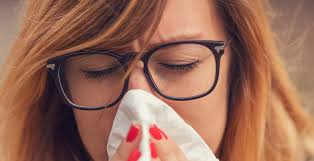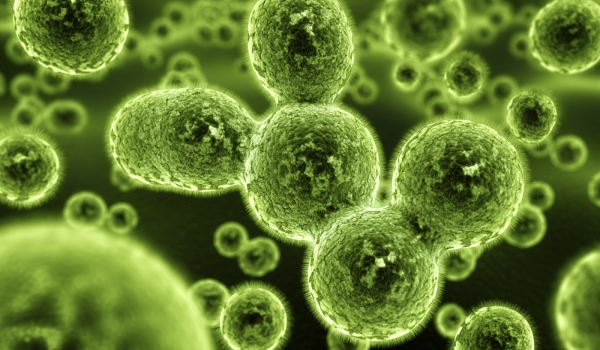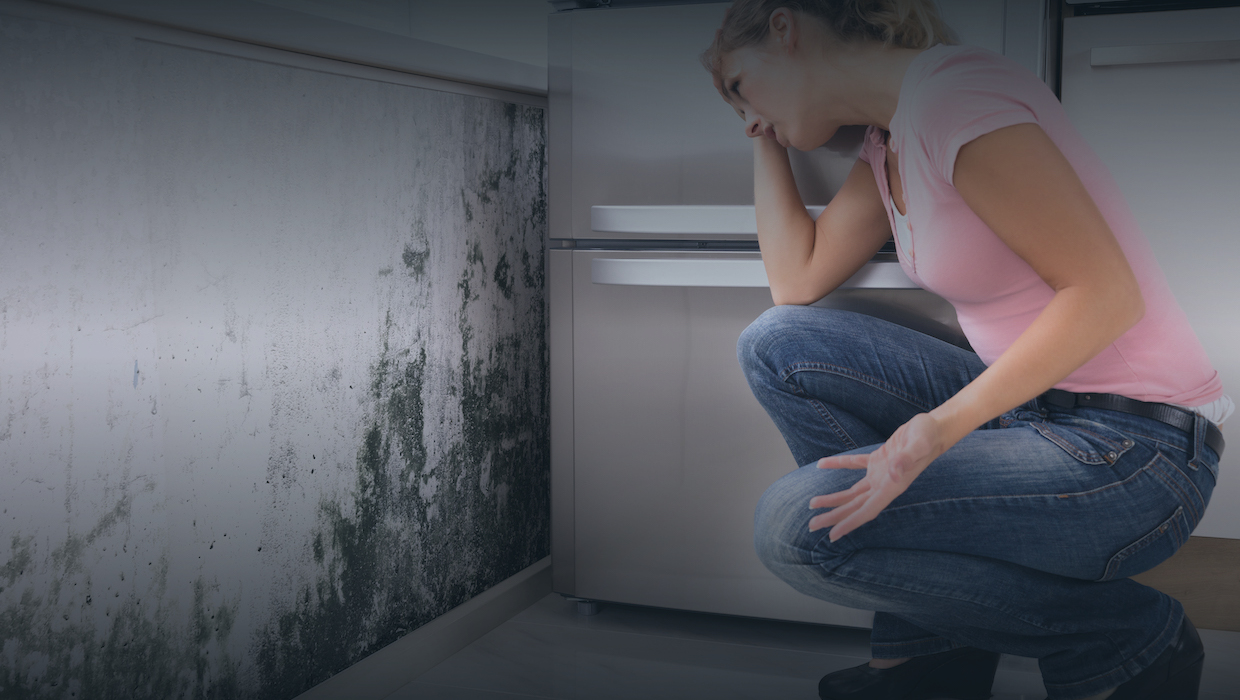Well Water Testing
Water samples are tested for two types of bacteria: total coliforms and E. coli.
Total coliforms. These bacteria are often found in animal waste, sewage, soil and vegetation. If they are in your drinking water, it means contaminated surface water may be entering your well.
coli (Escherichia coli). These bacteria are normally found only in the digestive systems of people and animals. If they are in your drinking water, it usually means that animal or human sewage waste is entering your well from a nearby source.
If these bacteria are in your water, they could cause illness such as stomach cramps, diarrhea, and other symptoms, which can lead to additional health concerns. All private well owners are encouraged to get their water tested every spring, summer and fall, even if it looks, tastes and smells fine.
We also recommend that you test your water:
After any repairs to your well;
If your well hasn’t been used for several weeks;
If there is flooding in the area; or
If you notice a change in your water (e.g. smell, taste or colour).
Whether your test results are positive or negative, it is important to understand that the sample you collected is just a “snapshot” of your well’s water quality. The more samples you have tested, the more confident you can be about the quality of the water you and your family are drinking.
In addition to regularly testing well water, owners should inspect their well at least once a year to make sure it is free from damage and in good working condition.
The lab will only accept water samples taken directly into the proper water testing bottle. The sample should only be taken from an indoor drinking water tap, from a kitchen or bathroom.
Wash hands before taking the sample.
Remove screen, aerator or other attachments from kitchen faucet.
Clean end of the faucet with an alcohol swab or diluted 5.25% bleach solution
[1 part household bleach to 10 parts water = 50 mL (1/4 cup) bleach to 500 mL (2 cups) water or 10 mL (2 tsp) bleach to 90 mL (6 tbsp) water]
Run cold water for at least five minutes.
Keep sample bottle closed until the moment you are ready to fill it.
Remove the bottle cap and hold the cap between the fingers, not touching the inside or setting it down to touch a surface (like the counter).
Do not touch the inside of the bottle or rinse the bottle out since it contains a preservative for transporting.
Hold the bottle near the bottom and fill to the 200 mL fill-line (maximum amount) and recap immediately.
Keep the blue card and attach one barcode sticker from the bottle, for your records; you will need this code if you wish to call the lab for your results.
Put your name on the label found in the bag that came with the bottle, attach it to the bottle, then place the completed form back into the plastic bag provided, and attach it to the bottle with the elastic.
Transport samples to the drop-off locations within 24 hours of taking the sample. Your water sample should not be left sitting for a long period of time as this can lead to inaccurate results. Samples must be kept cold after sampling. If you are transporting samples on a hot day, keep in a cooler with an icepack or bag of ice.
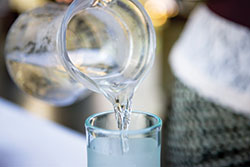
Water Testing
Testing Your Well Water
Test your well water once a year for bacteria and nitrates and every 5 years for arsenic, fluoride, uranium, radon, lead, and manganese.
If you have never tested your well water, we recommend doing a comprehensive or standard water test. Other times to test your well include:
If you are expecting a baby
Your water changes in smell, taste, and color
Your well runs dry and comes back
When buying a new home
After installing a water treatment system or replacing parts of your treatment system
After any work is done on your well
Get our brochure to learn more about well water testing
Common Well Water Contaminants and Problems
Arsenic
Fluoride
Lead
Manganese
Radon
Uranium
Corrosive Water External site disclaimer (Penn State Cooperative Extension)
How to disinfect or shock your well to remove bacteria (Maine Health and Environmental Testing Laboratory)
How to disinfect or shock your well to remove bacteria (Maine Drinking Water Program)
If you think your well has been contaminated by a sand/salt pile External site disclaimer
If your well has been flooded
Fixing Well Water Problems
Help paying for arsenic treatment External site disclaimer
Choosing a Radon Treatment Company
To make sure a treatment system is certified to remove a contaminant
Water Testing
Residential Home Owners
Unlike public water systems, which are regulated by the U.S. Environmental Protection Agency (EPA), private water supplies, like cisterns, wells and springs, are the responsibility of the homeowner and should be tested periodically to be certain they are safe for drinking.
Commercial Water Testing
Many businesses are required by the state to have their water tested routinely. Guthrie LEAP Testing Service is accredited for a variety of potable and non-potable analytes.
Legionnaires’ disease is caused by a type of bacteria called Legionella. Legionella bacteria are found in water sources including rivers, ponds, decorative fountains, cooling towers, hot and cold water systems and spas. Routine testing for Legionella pneumophila has been shown to reduce the risk of outbreaks. Legiolert is a 7-day culture test for Legionella.
Drinking water quality
Drinking water quality is an important public health issue
Drinking water quality is an important public health issue, so state and local officials closely monitor for contaminants and work together to protect water quality. Drinking water can be contaminated by man-made chemicals or by natural sources, like heavy metals in rock and soil. Natural waters contain impurities. Most impurities are harmless. However, drinking water that has certain levels of micro-organisms, minerals, man-made chemicals, or naturally-occurring pollutants can be harmful to your health.
Systems must meet Safe Drinking Water Act standards
MDH published Drinking Water Annual Reports provide summaries of water sampling and monitoring results. Local water suppliers also publish their own annual water quality reports (Consumer Confidence Reports) and distribute them to their customers. These may be obtained by request from local water utilities or through MDH’s Search for your Consumer Confidence Report (CCR).
has a vast amount of aging infrastructure. To continue to supply safe drinking water, communities will need to replace this infrastructure over the next few decades. For more information, visit the State Auditor’s Infrastructure Stress Transparency Tool Version 2.0, a series of interactive maps that visualize data
Climate change impacts should be considered in all drinking water planning and operations. The MDH Climate & Health Program is working to increase awareness of the public health impacts of climate changes to our water quality and quantity.
People with private wells should get them tested
About twenty percent rely on private, household wells as their source of drinking water in their homes. While community water systems are tested regularly for a variety of contaminants, only newly-constructed private wells are required to be tested for contaminants
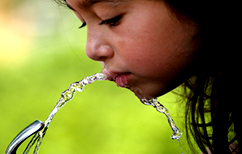
Well Water Testing
WATER BACTERIOLOGY TESTING FOR TOTAL COLIFORM/E. COLI
The Laboratory performs testing for Total Coliform/E. coli in drinking water for public water systems and private individuals with well water systems. The laboratory is accredited and certified to perform both presence/absence and enumeration testing.
FEES
Total Coliform/E. coli – Presence/Absence Test:
$16.00/sample
E.coli Enumeration Test:
$20.00/sample
AVAILABILITY
Water Testing is performed Monday through Thursday. Samples must be received prior to 3:00 p.m. on those days to insure enough time for sample processing and testing before the laboratory closes at 5:00 p.m. Testing is not performed on Fridays because the test takes 24 hours and the laboratory is closed on weekends.
FREE COLLECTION BOTTLES
The laboratory provides free sterile and buffered collection bottles for the collection of samples, and these are the only acceptable containers. Home-sterilized containers are not acceptable, as we cannot guarantee sterility as well as they do not contain a special buffer that assists in bacteria recovery. For this reason, only approved sample containers will be accepted. If you need them, please stop by our laboratory and pick them up for free.
SPECIAL FEES
There are special fees for special samples or samples that required repeated manipulations, extra work, or overtime to analyze. These fees will apply only to special or specific samples and should not normally be incurred when ordering Total or Fecal Coliform tests. If there is a special fee for your sample, you will be informed of this when you bring your sample to us for analysis.
